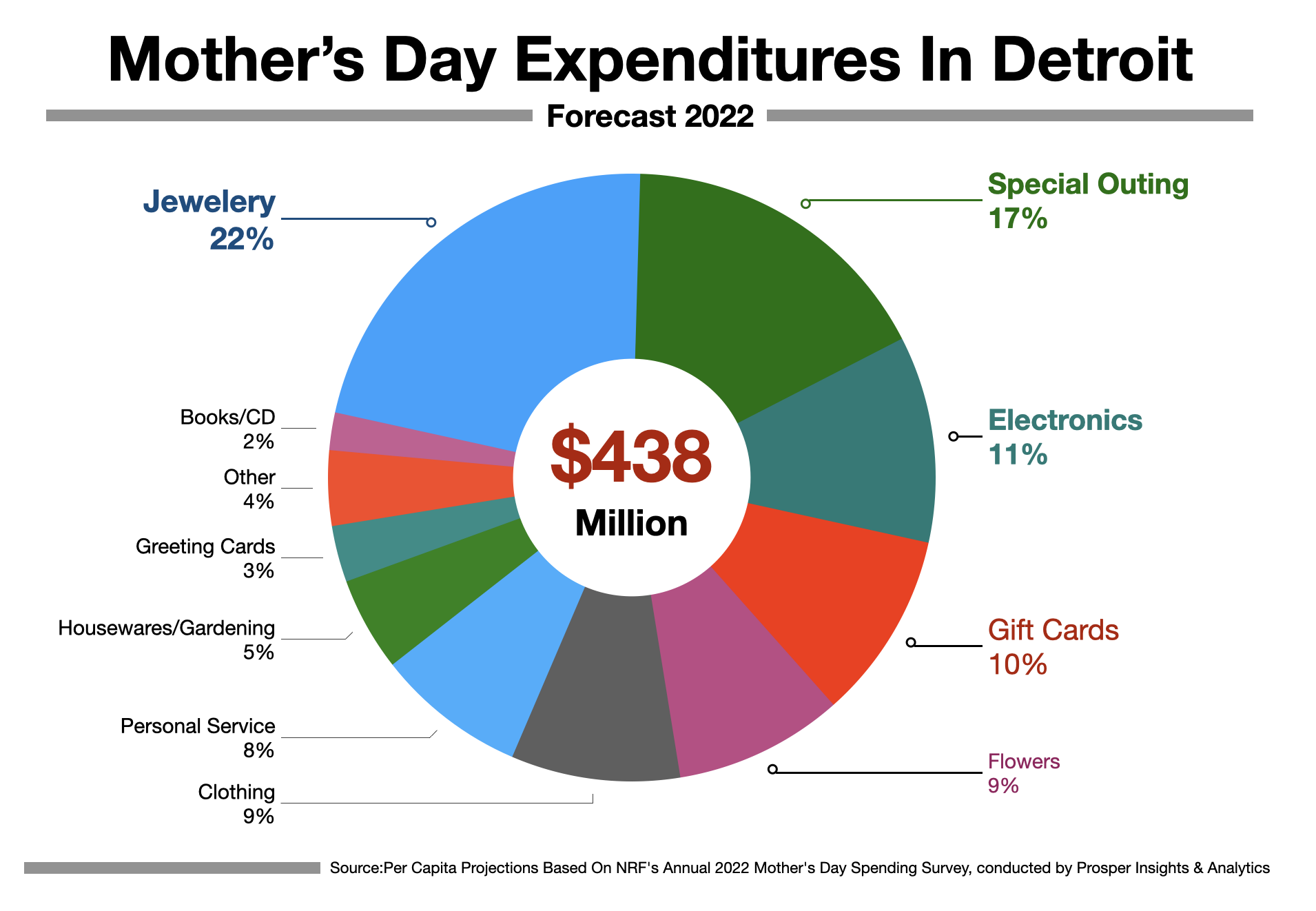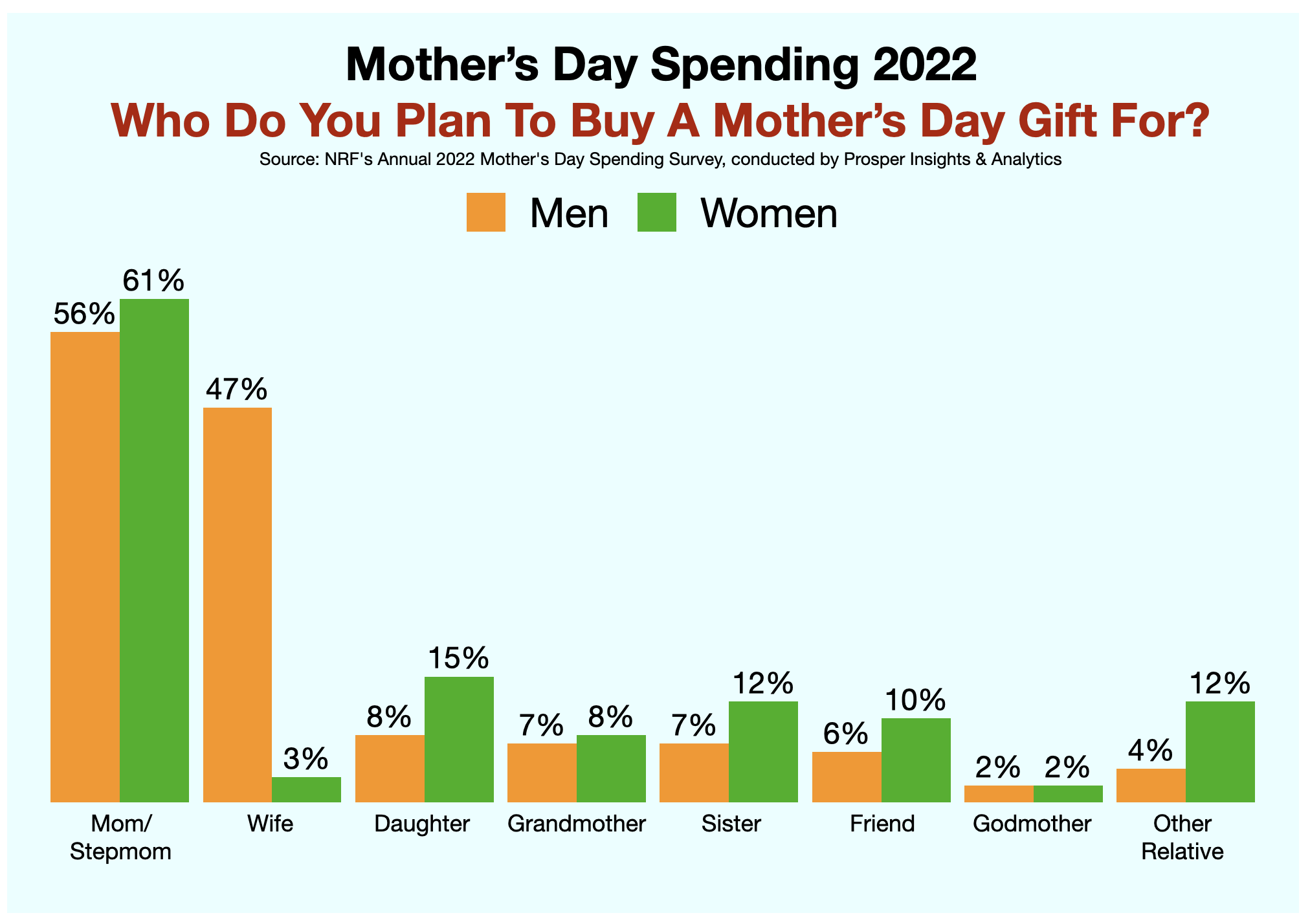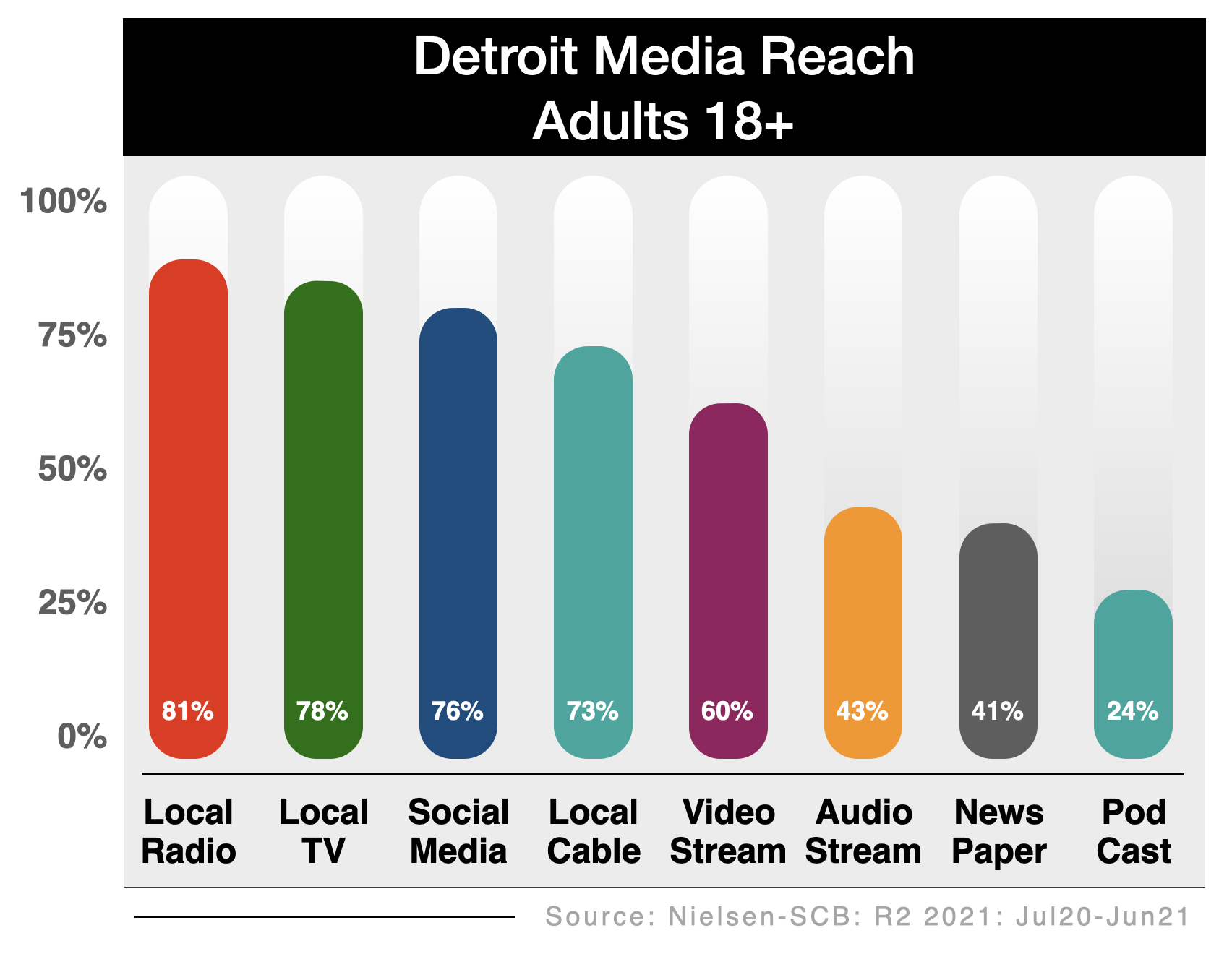 Eighty-four percent of all adults say they will celebrate Mother's Day in 2022. Based on per capita forecasts from the National Retail Federation (NRF), Southeast Michigan consumers are expected to spend $438 million on the moms in their lives. This is a 13% increase over last year.
Eighty-four percent of all adults say they will celebrate Mother's Day in 2022. Based on per capita forecasts from the National Retail Federation (NRF), Southeast Michigan consumers are expected to spend $438 million on the moms in their lives. This is a 13% increase over last year.
“Consumers are eager to find memorable ways to honor their mothers and other important women in their lives and are willing to spend a little extra on this sentimental holiday,” said NRF President and CEO Matthew Shay.
The NRF spending projections indicate that Detroit consumers will spend $96.4 million on jewelry and another $72.9 million on special outings such as dinner or brunch. This will be the highest level of Mother's Day spending ever in these categories.
Here is how this large pool of Mother's Day cash in Detroit is expected to be distributed by all retail categories.
The NRF research indicates that men will outspend women 3-to-1 this year on Mother's Day gifts. Most of these dollars will go towards presents for their moms, stepmoms, and wives.
Of all the money spent, Detroit consumers are expected to spend 36% online, 30% at department stores, 27% at specialty stores, and 23% at local small businesses.
To compete for a share of record-high Mother's Day spending this year, local business owners will need to advertise. By most key marketing metrics, the best way to reach holiday shoppers is by advertising on Detroit radio.
The first, and most important metric, is advertising return on investment (ROI).
From April through July of 2021, Neilsen measured the sales results of a radio advertising campaign conducted by a major retailer. The study utilized portable people meter technology to segment consumers into two discrete categories: those who were exposed to the retailer's advertising campaign and those who were not.
 Nielsen was then able to match the consumers in each segment to their credit/debit or shopper card purchase behavior. Consequently, the study measured decisively how sales were affected by the retailer's advertising campaign.
Nielsen was then able to match the consumers in each segment to their credit/debit or shopper card purchase behavior. Consequently, the study measured decisively how sales were affected by the retailer's advertising campaign.
Here are the key takeaways from the Neilsen study:
- One or two exposures to the radio campaign resulted in a 22.4% increase in the number of shoppers
- Three to six exposures to the radio campaign resulted in a 7.6% increase in the number of shoppers
- Exposure to the radio campaign increased the number of transactions among the retailer's existing customers by 11%
- Exposure to the radio campaign increased the number of transactions by the etailer's most active customers by 31.2%
- Exposure to the retailer's radio campaign generated a sales increase of 9.7%
Most importantly, the Nielsen study revealed that every $1000 that the retailer invested in the radio advertising campaign returned $13,000 in sales. A 13-time ROI.
Detroit retailers should know that these findings support 22 other Nielsen studies that indicate, on average, that advertising on local radio delivers a 10-time return on investment.
AdAge, a trade magazine for advertising professionals, calls these types of returns "eye-popping." The magazine goes on to say radio's ROI is superior to commercials on TV, online, and social media.
To learn more about Nielsen's latest ROI study, click here.
Radio's ROI is partly driven by the medium's dominant reach among local consumers.
Every week, according to Nielsen, 2.8 million adults are reached by Detroit radio stations. This is more consumers than are available via social media, local TV, local cable, local newspapers, streaming audio, and streaming video.
Mother's day is only a few weeks away. By advertising on Detroit radio, local retailers still have time to aggressively peruse the expected surge in holiday spending.






